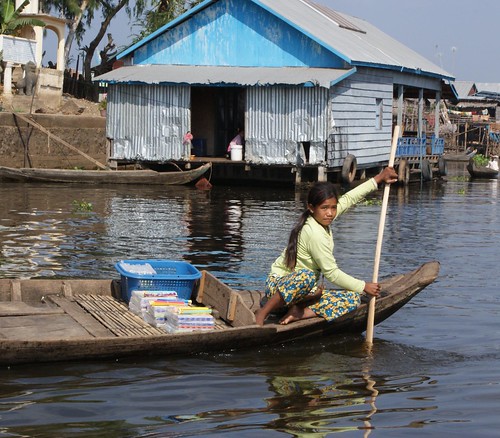Editor's note: In Context is a new series designed to inform and educate you on Heifer's work in each country we have a presence. Every two weeks we'll tackle a different country and examine unique situations related to hunger and poverty, how Heifer works to address them as well as take some time to explore local culture and traditions.
Overview
Population: 15 million
Native greeting: Choum Reap Sour (hello)
Local currency: Riel
Cambodia, nicknamed the Kingdom of Wonder, is located on theGulf of Thailand in Southeast Asia between Vietnam, Laos and Thailand; thecountry’s landscape is made up of low lying central plains, low mountains andthe upper reaches of the Mekong Delta.
It’s a land in recovery. Rich in history and naturalresources, Cambodia is influenced by decades of war and conflict. Ranked 139thout of the world’s 196 countries on the 2011 HumanDevelopment Index, it’s considered one of the poorest countries in theworld.
Despite recent socio-economics progress, 31% of thecountry’s estimated 14.8 million people live on less than $1.25 a day—that’s 4.6million men, women and children. To add a little perspective, it would be as ifevery person in South Carolina (population 4.6 million) had only $1.25 a day totake care of all necessary expenses—we’re talking basic food, water andshelter.
In Cambodia, 80% of the population lives in rural areas andhalf of the workforce is employed in agriculture, the country’s major industry.Rice farming is huge and many villagers raise cattle and pigs. However, due toslow growth and high mortality rates combined with a lack of education and accessto new technologies, productivity is slow and many families can only produceenough food for a few months out of the year. When food is in short supply, manyfarmers end up borrowing money from lenders, usually with interest rates ashigh as 10%.
Adding fuel to the fire, malnutrition rates in Cambodiansare among the highest in Asia. Nearly 40% of children are chronicallymalnourished and have deficiencies in iron, vitamin A and iodine.
Fish is the most common source of protein for Cambodians butfarmers lack adequate experience in aquaculture. The daily catch almost alwayscomes from natural ponds, canals and rice fields, contributing to a declining fish population.
It’s not all bleak though, in the last decade, the economyhas seen progress. While still low, the per capita income is slowly increasingthanks in part to the growth of agriculture.
Heifer’s approach inCambodia
Livestock Portfolio:Cows, Buffalo, goats, chickens, ducks, pigs and fish fingerlings
Technology portfolio:Organic farming, biogas and composting
Issues addressed:Income generation, migration, adult literacy, women and leadership,environment, HIV/AIDS and domestic violence
To address the challenges of income deficiency, lack ofnutritional food options and small farmer education, Heifer Cambodia uses a holisticdevelopment approach that encourages rural families to become involved in thecommunity development process. To begin with, families receive a package ofagricultural inputs, like a cow or two piglets, fish fingerlings, fodder,vegetable seeds and cassava stems, apply the HeiferCornerstones, receive education and training in technical skills so thatthey are able to improve and diversify their food production in a sustainablemanner. This process builds up self-confidence and provides a way to beself-reliant for a better future.
Heifer Cambodia works with small farmers to improve productivityand provide access to markets. Heifer enables limited-resource farm families toimprove the quality of their lives and equips them to assist others, providingopportunities for families to produce and share food and income from their ownresources in ways that are economically and ecologically sound. Based onHeifer’s best practice on internalized holistic development, the participatingfamilies form and work as self help groups, which encourages fullparticipation.
Since 1999, Heifer Cambodia has assisted 10,926 families


